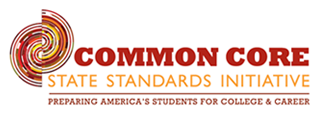
The Spin Behind Common Core
The facts behind the learning standards
that were cleverly coined
COMMON CORE.
Established around 2010, Common Core is a set of standards that pushes kids faster than previously in their elementary, middle school, and high school education. It flies in the face of individualized instruction, which promotes meeting a child where his developmental stage indicates he is ready. It also contradicts the philosophy of a democratic society: the idea that people get to choose their own path in life. Common Core dictates advanced placement acquisition of concepts as early as third grade, when students are expected to begin their foray into multiplication, division, and algebraic expressions, and write analyses of character development in books like Charlotte's Web. It assumes that all students are college-bound and must be prepped for that beginning in their primary years in elementary school.
One fall-out from common core is that many students are resisting the push toward faster learning. Nothing is riding on their engagement in the program, so many opt out because it is easier than pushing themselves beyond their comfort level. Most don't care whether they do well on the state tests that were developed using the core standards. Teachers, however, do obsess over these test results because they must. It has become an ongoing conundrum for teachers in the classroom: how to make students want to learn material that is either too difficult for them at a young age or uninteresting to them at all. Telling a 4th grader that he needs to prepare for all possibilities in his life leads to dismal results. You cannot motivate a 9-year-old to aim for AP classes in high school with any real hope for success. Instead, what you should do is observe the natural development of children in grades K-5 and sort them into the groups (classes) that will benefit them the most. Some will land in those common core classes because they have GT potential. Others will not. That is the way things work in a free society. You cannot beat knowledge into people. Holding everyone accountable for a list of learning goals that is not doable for some people only frustrates everyone in the program.
To be sure, some students will understand the material at a later stage in their schooling. This is why there should be leveled classes all along the way toward high school graduation. Students who wish to attend college might be able to understand the material in the final years before they make that leap. But to hold them accountable for learning that is beyond them prior to that makes little sense. And not everyone wants to attend college or even belongs there. Is it really necessary for the high school senior who wants to be a mechanic or open his own plumbing business (very good professions) to learn quadratic equations? What he needs is business math and a good trade school.
Middle school programs should begin the process of counseling students to determine what they imagine their path in life will be and then tracking kids toward those goals. Insisting that all students travel their public school path as if they are wired to become nuclear physicists or computer geniuses encourages cynicism in our young people and chaos in our schools.

The Lie About Common Core
It was developed to address the inadequacy of incoming college freshmen
and to establish national education standards.
It is a glaring example of well-intended but misinformed ideas making
their way into accepted education policy. Again.




